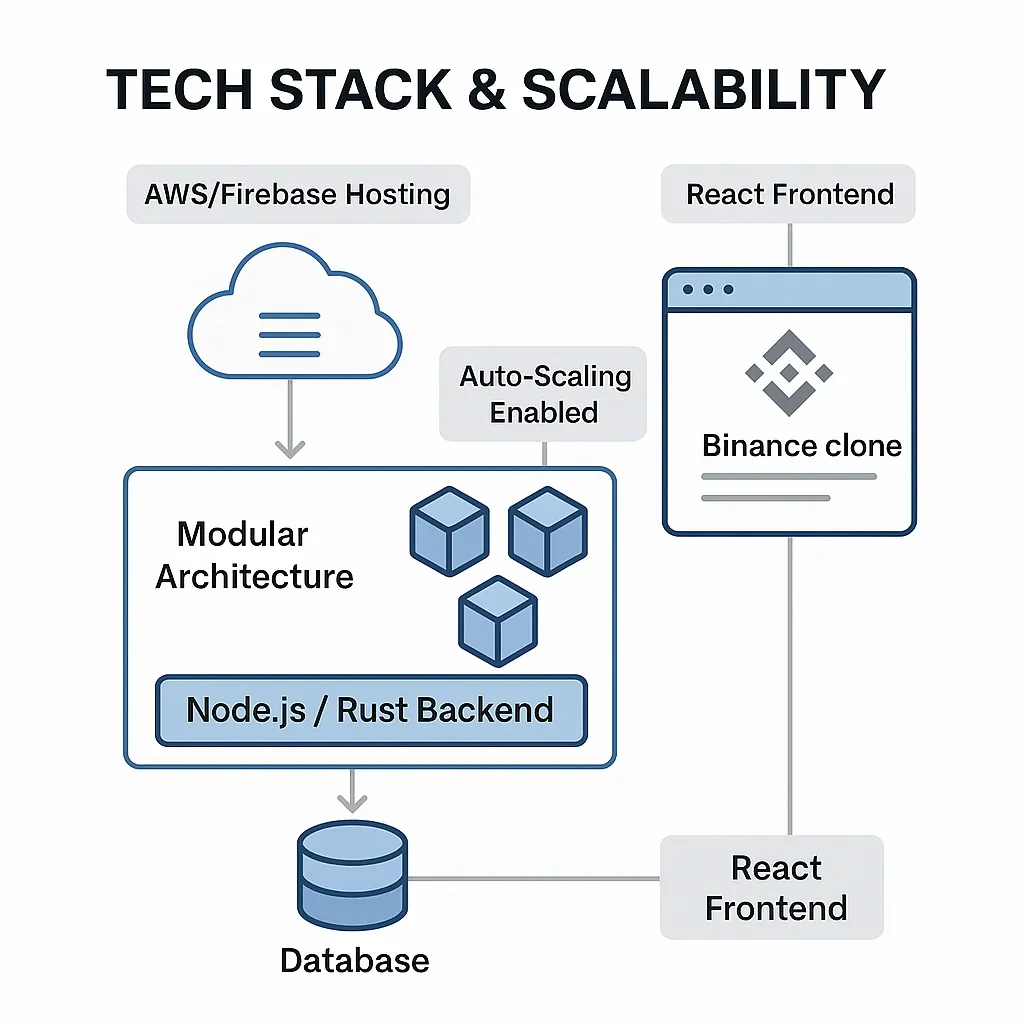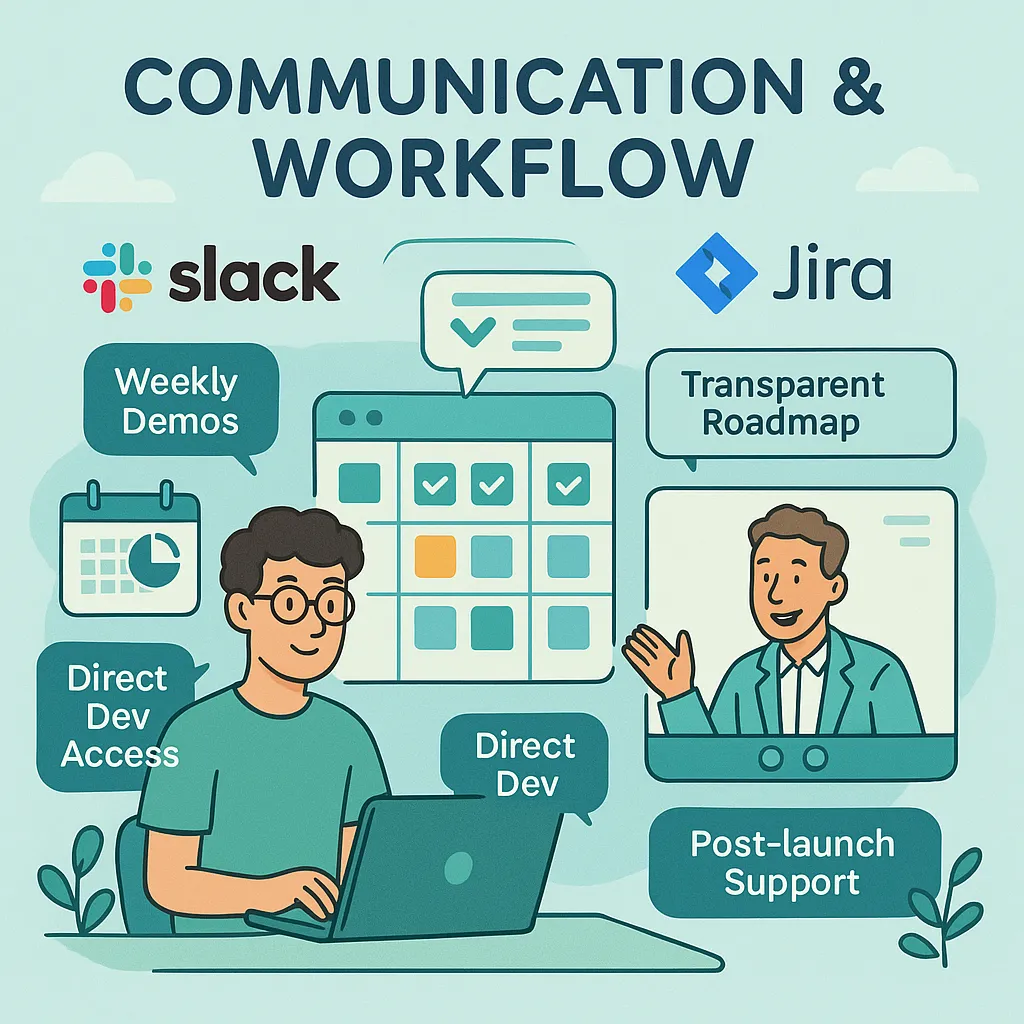How to Hire the Best Binance Clone Developer
Create a powerful, customizable streaming solution with Miracuves’ Binance Clone, equipped with high-performance features and next-gen technology.
The crypto space moves fast, and if you’re building a crypto exchange platform like Binance, you already know the stakes are high. You’re not just creating a wallet and a trading UI — you’re launching an entire financial ecosystem. To pull that off, you need more than a good idea. You need the right Binance clone developer. Not just someone who knows blockchain basics, but a team with the depth, scalability mindset, and security-first approach to deliver a powerful, compliant platform.
In this guide, we’ll walk you through what to look for — so you don’t just hire a developer, you partner with a crypto-savvy team that can bring your vision to life.
Look for Domain Expertise
Crypto exchange development isn’t like building a standard app — it demands niche knowledge of blockchain protocols, trading engines, and financial compliance.
Here’s what that looks like in practice:
Previous experience with exchange platforms: Ask if they’ve built centralized or decentralized exchanges, P2P trading platforms, or wallet integrations.
Smart contract proficiency: For decentralized features, you want a developer fluent in Solidity and capable of secure, gas-optimized contract deployment.
Compliance-ready approach: Do they understand KYC/AML workflows? Can they help you integrate with identity verification services and ensure regulatory compliance in your target regions?
Real-time systems background: Building order matching engines, liquidity pools, and low-latency trade execution requires high-level technical chops.
A developer with domain expertise will not only speed up your timeline — they’ll protect you from costly mistakes in architecture, UX, and compliance.
Tech Stack & Scalability
You’re not building for today’s users — you’re building for tomorrow’s scale. Your Binance clone must handle high-frequency trading, thousands of concurrent users, and future feature rollouts without downtime.
Here’s what to check for:
Modern tech stack: Prioritize teams using frameworks like Node.js, Golang, or Rust for backend performance, and React or Next.js for fast, responsive frontends.
Modular architecture: Ensure the platform allows plug-and-play modules like staking, margin trading, or NFT marketplaces — so you’re not locked in.
Cloud-native scaling: Ask if they use AWS, GCP, or Kubernetes for deployment. Auto-scaling and failover strategies are must-haves for trading uptime.
Security-by-design: DDoS protection, data encryption, cold wallet integration, and transaction rate limiting should be part of the foundation — not add-ons.
Solid infrastructure isn’t just about performance. It’s the difference between a platform that grows with your users… and one that crashes at peak load.


UI/UX Capabilities
The best Binance clone isn’t just functional — it feels intuitive, sleek, and trustworthy. In the crypto world, design isn’t a bonus. It builds user confidence.
Here’s what good UI/UX means in a clone exchange context:
Responsive dashboards: From pro traders to crypto newbies, your platform must offer role-specific dashboards that display real-time data, charts, and positions.
Intuitive order flows: Placing market, limit, or stop-limit orders should feel seamless — on both desktop and mobile.
Brand customization: Your clone shouldn’t scream “template.” Look for flexibility to apply your own branding, layout changes, and onboarding flows.
Dark/light modes & accessibility: Users expect UI options — and everyone should be able to use your app regardless of device or visual ability.
A great user experience isn’t cosmetic. It directly impacts trust, retention, and conversion.
Communication & Workflow
A Binance clone isn’t a quick build — it’s a multi-phase development journey. Without strong communication and project management, even the best teams struggle.
Here’s how to evaluate this early on:
Project transparency: Will they use tools like ClickUp, Jira, or Trello to track tasks, sprints, and bugs?
Regular check-ins: Weekly demos or progress calls help catch misalignments early.
Direct access to dev leads: Avoid teams where all communication flows through a sales rep. You’ll want real-time feedback from tech decision-makers.
Post-launch support: Does their process include performance monitoring, bug fixes, and feature enhancements after go-live?
A smooth development workflow isn’t just efficient — it reduces risk, saves time, and keeps you in control of your product roadmap.


Pricing Models & Quality
In crypto, getting it wrong can be expensive. But that doesn’t mean you should overpay. The key is understanding what you’re paying for.
Here’s how to approach pricing:
Transparent estimates: Ask for a breakdown by feature, timeline, and dev hours — not vague packages.
Clarity on inclusions: Will the quote include UI design, security audits, token development, exchange engine, wallet integration?
Avoid “too cheap” offers: Low quotes often mean shortcuts, poor documentation, or hidden tech debt that comes back to haunt you.
Future-proof pricing: Some clones require license renewals, hosting fees, or per-user pricing. Clarify these up front.
You want a developer who respects your budget but also builds a secure, scalable product you won’t need to rebuild in six months.
Choose the Right Development Partner
Even with a rock-solid vision, launching a crypto exchange platform like Binance is no small task. You need a development team that not only understands the complexities of blockchain and trading systems — but also has real-world experience building secure, scalable crypto solutions.
Choosing the right Binance clone developement company can help you go live faster, stay compliant, and avoid major technical and security setbacks.
Look for a partner that offers:
Proven experience in crypto exchange and DeFi development
A portfolio with high-performance, audited trading platforms
End-to-end services — from whitepaper consulting to post-launch support and maintenance
At Miracuves, we don’t just deliver clones — we build scalable, security-first crypto exchange platforms tailored to your long-term vision. Whether you’re launching a global exchange or a niche trading app, we’ve got the tools and the expertise to bring it to life.
Conclusion
Hiring the best Binance clone developer is about more than checking off technical skills — it’s about aligning with a partner who understands the crypto exchange landscape from top to bottom. Look for deep domain expertise, modern scalable architecture, smart UI design, reliable communication, and transparent pricing. When you find that balance, you’re not just building an exchange — you’re building a foundation for long-term success in Web3.
Frequently Asked Questions
It’s a ready-to-customize exchange platform that replicates Binance’s core features — trading engine, wallet, admin panel, etc. — tailored to your business.
Yes! The right team can modularly build or integrate those — just make sure your developer supports flexible architecture.
It can be — if your dev team includes audits, encryption, and secure infrastructure from the start.
Depending on customization, most MVP builds can take 4 to 12 weeks when developed from scratch. However, with Miracuves’ ready-made Binance Clone Solution, you can launch your crypto exchange in just 3–9 days.
Our pre-built, customizable framework includes setup, configuration, and deployment — helping you go live faster while maintaining enterprise-grade security and scalability.
Yes, most regions require it. Your developer can’t provide that, but they should design the platform with compliance in mind.



